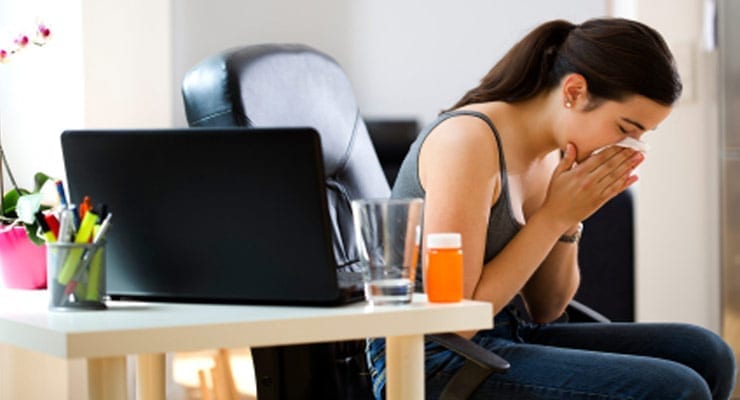In addition to making you feel sick, winter bugs such as the flu and common cold, can leaving you feeling frustrated over missed workouts. Dedication to your workout and physical fitness doesn’t always have to fall by the wayside due to illness, but knowing when to continue exercising and when to avoid it can be confusing.
Certain rules of thumb can help you determine whether you should get your sweat on or put your gym bag away for the day. Learn more about exercising and illness to make the best choice for your health with these general rules for exercising while sick:
Symptoms – Are They All in Your Head?
If they are, it’s actually a good thing. Symptoms of illness that you feel in the head area, such as a headache or stuffed up nose, don’t have to keep you from your workout.
Below the Neck Symptoms
But when your symptoms are located below the neck, it’s best to skip your workout. Chest congestion, stomach flu or body aches are your red flags that exercise is off-limits.
Definite No-No’s
Fever and fatigue accompanying illness make exercising a definite no-no. Since exercise raises your heart and breathing rate, you’re put your body under unnecessary stress as it tries to fight fever and adjust to the exertions of exercise simultaneously.
Check out the following exercise modifications for working out while ill:
Decrease Duration and Intensity
On sick days when it’s okay to exercise, do your body a favor and decrease the duration and intensity of your workout. Pare an hour-long workout down to 30 minutes, or walk around the track instead of jogging.
Don’t Exercise as Often
It’s also wise to skip a workout here and there until you’re feeling better. Instead of exercising daily, workout every other day to get your cardio and strength training in without pushing your body too hard.
Gradually Resume Your Normal Workout
Once you’re feeling better, it can be tempting to jump right back in to your normal workout routine. But pushing yourself too hard too soon can cause you to have a relapse and become sick again. Slowly increase your duration and intensity over the period of a few days to a few weeks depending on how long you were sick. This will allow your body to adjust to the demands of your workouts after taking it easy for a while.
Health Precautions for Exercising at the Gym
- Use Available Cleaning Sprays. Most health clubs have cleaning or antibacterial sprays throughout the facility that you can and should use before and after using a piece of exercise equipment. In addition to using this when you’re sick, be sure to clean equipment when you’re healthy so you don’t pick up other exercisers’ germs.
- Practice Good Hygiene. You’ve heard it before– wash your hands to avoid getting germs. This practical advice is repeated so often because it’s true. Wash your hands when you get to the gym and before you leave.
- Know When to Stay Home. No matter how much of a gym rat you are, stay home if you’re sick or if there’s a chance you may get someone else sick. You can always work out at home until you feel better.
Whether a winter bug has got you down or you’ve succumbed to the odd summer cold, it’s important to know whether or not you can exercise with caution or if you should avoid it altogether.
When in doubt about your illness, always see your doctor before you decide it’s okay to workout. If you’ve gotten the okay, keep an eye on your energy level to avoid using up what your body needs to get well. In the end, a few missed workouts won’t cause you to lose all the health benefits you’ve worked so hard to gain.
Weigh the pros and cons, and decide if working out is going to make you feel better or if it just might lead you to spend more time on the sidelines.





